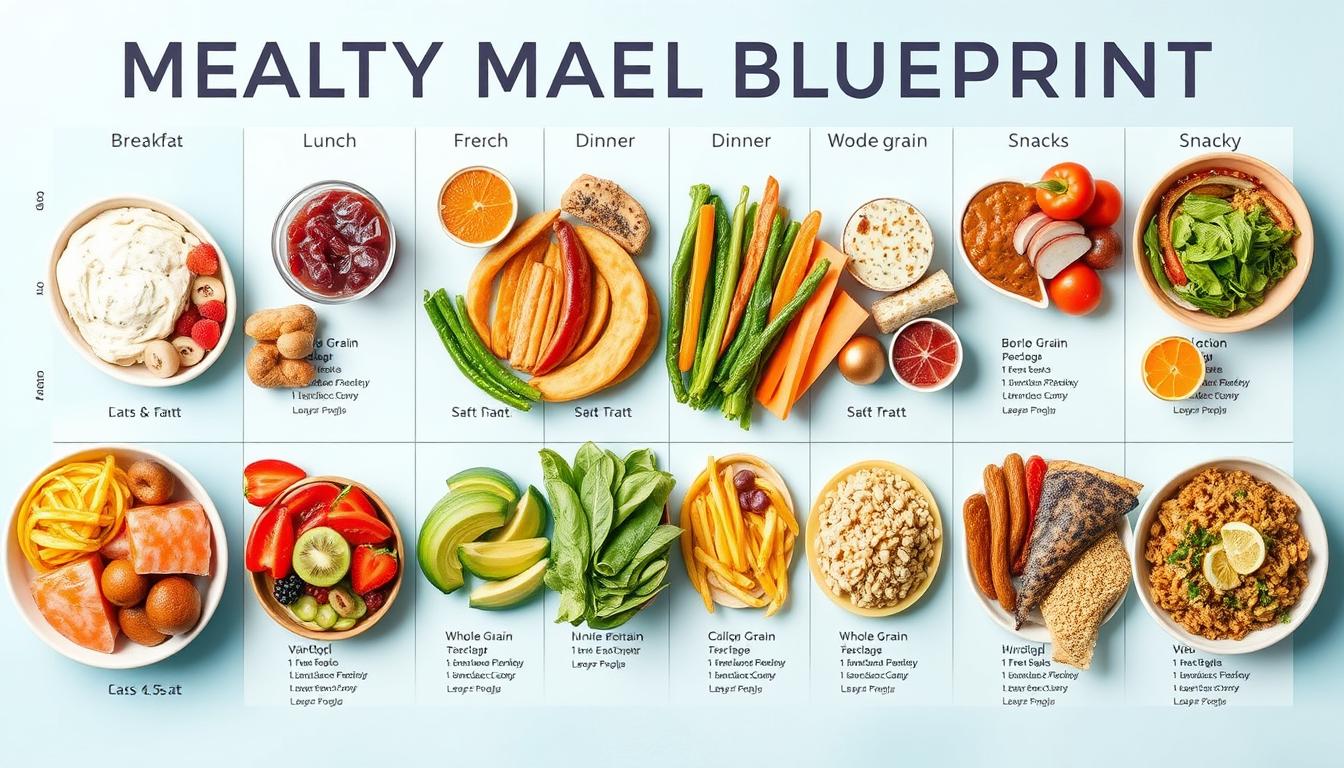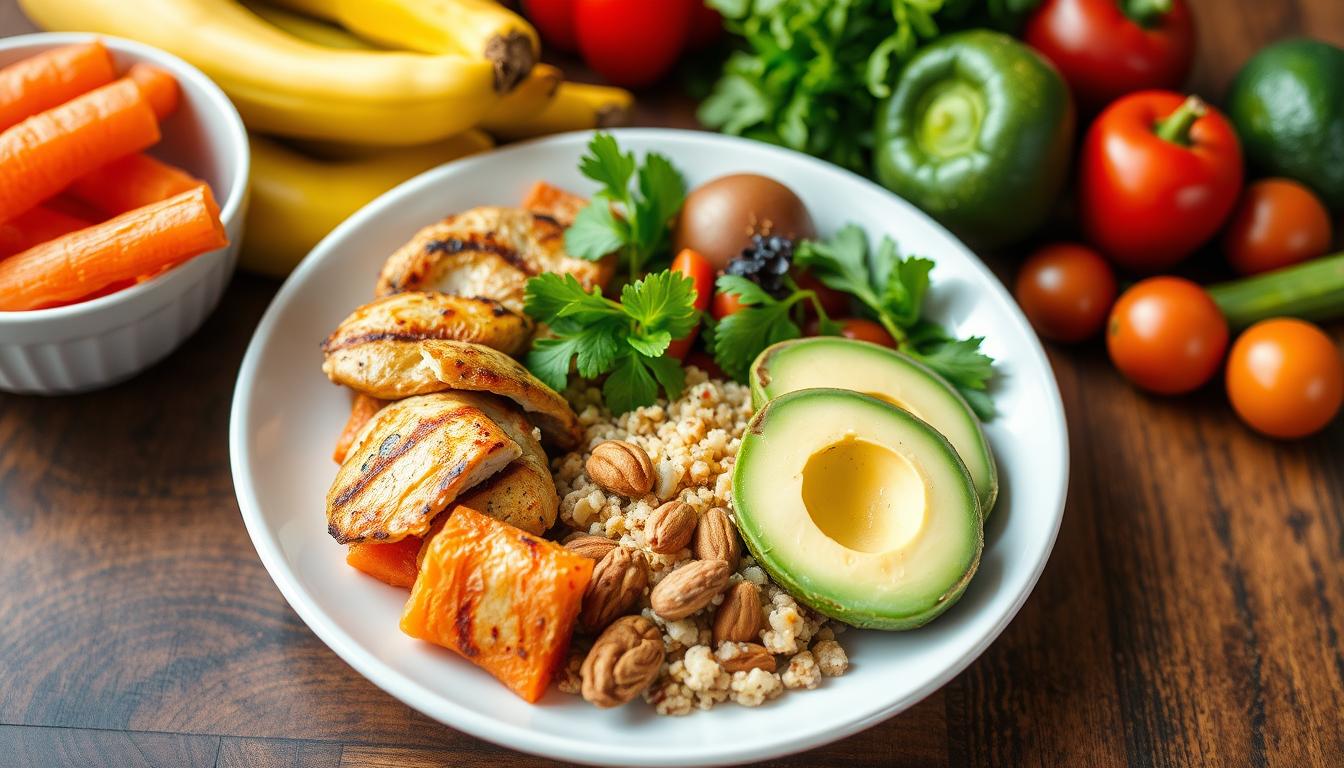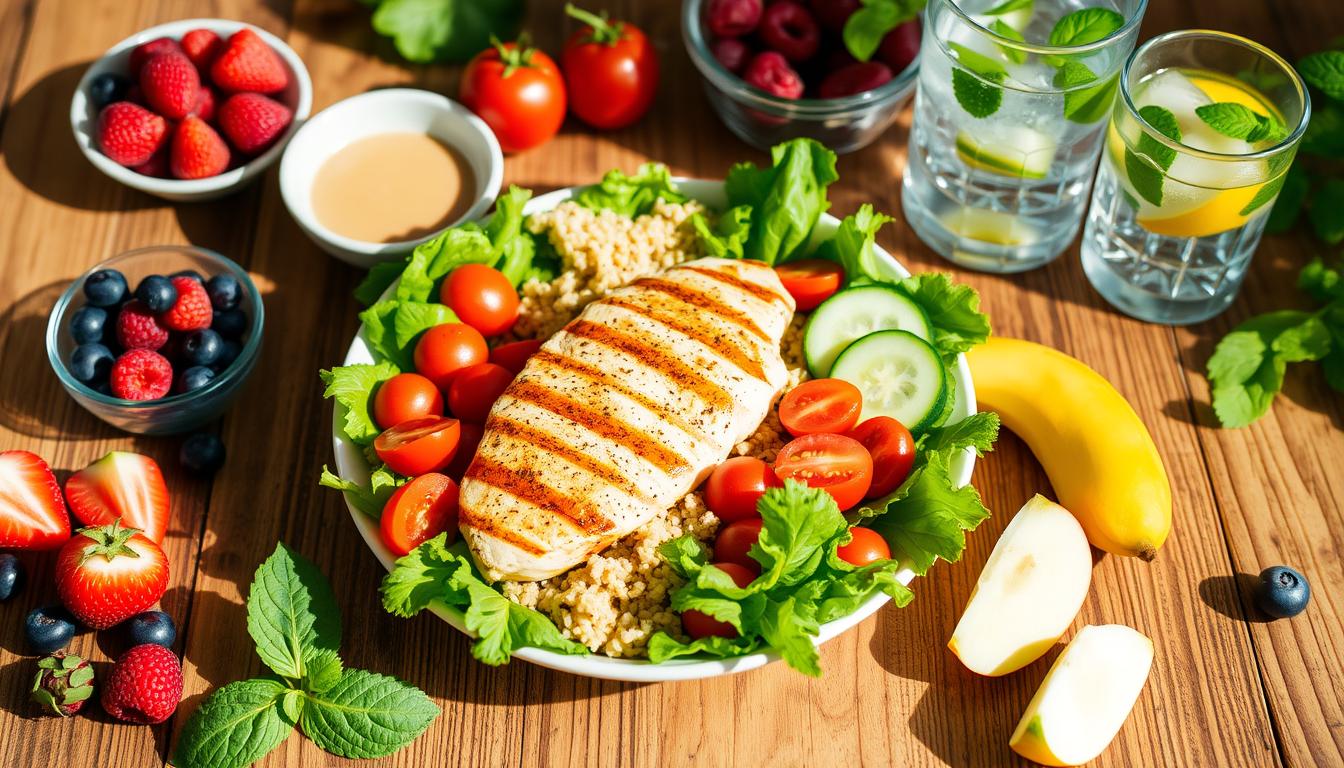Starting a weight loss journey can feel overwhelming. But, the right strategy can make it possible. Crash diets are often seen as a quick way to lose weight. It’s important to know the science behind them to stay safe and effective.
Many people aim to lose weight. A well-thought-out crash diet can be a good choice. The goal should be a balanced and healthy weight loss, not just following fad diets.
For weight loss, having realistic goals and understanding what works is key. Crash diets can kickstart weight loss safely and sustainably. Combining a healthy diet with regular exercise can lead to significant weight loss in a short time.
The idea of losing 10 pounds in 10 days might seem far-fetched. But, with the right diet and exercise plan, it’s possible.
Introduction to Rapid Weight Loss
Rapid weight loss is often linked to crash diets. It’s important to know the risks and benefits. Always prioritize your health and well-being when losing weight.
A well-planned crash diet can be safe and effective for weight loss. Listen to your body and adjust as needed. Focusing on weight loss and health can help you reach your goals and maintain a healthy lifestyle.
Understanding the Science Behind Rapid Weight Loss
Many of us want to lose weight fast. But have you thought about what happens in your body when you start losing weight? It’s all about nutrition and metabolism. Your metabolism is key in burning calories and turning them into energy. When you eat fewer calories, your body has to find new ways to make energy.
This process is complex but important to understand. Here are some key points to consider:
- Your body slows down its metabolism when you eat less to save energy.
- As you keep eating less, your body starts using stored fat for energy.
- Eating a balanced diet that gives your body enough nutrition is crucial for your metabolism.
Knowing how your body reacts to eating less and the role of metabolism in weight loss helps you make better choices. Next, we’ll look closer at metabolism in quick weight loss. We’ll also see why old diets often don’t lead to lasting results.
Safety First: Is This Diet Right for You?
When thinking about a crash diet, remember to focus on diet safety and healthy eating. It’s important to check if this diet fits your needs and health. Some health issues, like diabetes or heart disease, might need special diet plans.
Good healthy eating means getting all the nutrients you need without risking your health. Always talk to a doctor before starting a new diet. They can guide you based on your health and needs.

Some people should be extra careful with diets. For example, those with eating disorders or certain health problems might not be good candidates for crash diets. By focusing on diet safety and healthy eating, you can avoid risks and have a successful weight loss journey.
To make sure your diet is safe and works, consider these steps:
- Consult with a healthcare professional before starting any new diet regimen
- Assess your individual health needs and conditions
- Prioritize healthy eating habits and diet safety
By being careful and informed, you can reach your weight loss goals. And you can do it in a way that keeps you healthy and balanced.
The Fundamental Rules of This 10-Day Diet Plan
To get the most out of your diet plan, knowing the basics is key. This means figuring out how many calories you need each day. It also involves planning your meals and choosing the right foods. A good meal timing plan can boost your metabolism and aid in weight loss.
Research shows that eating smaller meals often can keep your metabolism up. This method can also cut down on hunger and help with weight loss. Here are some important tips for your diet plan:
- Calculate your daily calorie needs based on your age, weight, and activity level.
- Space out your meals to maintain a consistent energy level throughout the day.
- Include a balance of protein, healthy fats, and complex carbohydrates in each meal.
By following these tips and using a smart meal timing strategy, you can reach your weight loss goals. Don’t forget to drink plenty of water and pay attention to your body’s nutritional needs.
Understanding these basic rules will help you succeed with the 10-day diet plan. It will also help you make lasting changes for better weight management.
Your Day-by-Day Meal Blueprint
To get the most out of the 10-day diet plan, having a clear meal blueprint is key. It shows what to eat each day. This makes nutrition planning easier and helps you get the nutrients you need for weight loss.
A typical day on the diet plan might include:
- Breakfast: Oatmeal with fruit and nuts
- Lunch: Grilled chicken with vegetables and quinoa
- Dinner: Baked salmon with sweet potato and green beans
- Snacks: Fresh fruit, carrot sticks with hummus, or a handful of almonds
Drinking plenty of water is also important. Aim for at least eight glasses a day. It helps control hunger and supports your health.

By sticking to this meal blueprint and planning your nutrition daily, you’re on the path to weight loss. You’ll also develop healthy eating habits that will last forever.
Strategic Exercise Pairing for Enhanced Results
A well-planned exercise routine is key for weight loss. The right physical activity boosts your metabolism and energy. It also supports your health. We’ll show you how to pair exercise with your diet for better results.
Starting your day with a workout is great. Try brisk walking, jogging, or yoga. In the evening, do gentle stretches or light cardio. Don’t forget to rest and recover to avoid injury.

- Improved cardiovascular health
- Increased muscle mass and strength
- Enhanced flexibility and mobility
- Better sleep quality
Adding a strategic exercise plan to your weight loss journey brings many benefits. You’ll get healthier and enjoy a more sustainable lifestyle.
Regular physical activity can help reduce the risk of chronic diseases, such as heart disease and diabetes, and can also improve mental health and mood.
Keep up with your exercise routine and adjust as needed. The right diet and exercise combo leads to significant weight loss and better health.
Understanding Water Weight and True Fat Loss
When you’re trying to lose weight, it’s key to know the difference between water weight and true fat loss. Water weight is extra water in your body that changes daily. True fat loss, on the other hand, means you’re losing body fat, which is a lasting goal.
To tell water weight from true fat loss, watch your progress over time. True fat loss shows up in changes to your body measurements and health. Here are some main differences:
- Water weight loss happens fast but doesn’t last long. True fat loss is slower and keeps going.
- Water weight loss might not change your body measurements much. But true fat loss does, making your body leaner.
- True fat loss also means better health, like more energy and better blood work.
Knowing the difference helps you set realistic goals and stay on track with your weight loss. A healthy diet and regular exercise are key to losing true fat and getting healthier.
True fat loss is not just about the number on the scale, but about the overall transformation of the body and improvement in health markers.
Common Challenges and How to Overcome Them
Starting a weight loss journey can be tough. You might face hunger, low energy, and tricky social situations. These obstacles can slow down your progress.
To beat these diet challenges, you need smart strategies. Drinking water and eating often can help with hunger and energy. Also, planning meals and being ready for social events can keep you on track.
Dealing with Hunger Pangs
- Eat smaller, frequent meals to keep your energy levels stable
- Incorporate protein-rich foods to help you feel fuller for longer
- Stay hydrated by drinking plenty of water throughout the day
Managing Energy Levels
Enough sleep and regular exercise boost energy. Listen to your body and rest when needed.
Social Situations and Diet Adherence
With a little planning and creativity, you can navigate social situations without compromising your diet. Focus on finding healthy options and don’t be afraid to ask for modifications if needed.
| Challenge | Solution |
|---|---|
| Hunger pangs | Eat regular meals, stay hydrated |
| Energy slumps | Get enough sleep, engage in physical activity |
| Social situations | Plan ahead, find healthy options |
Understanding and tackling these diet challenges can help you succeed. You’ll be on your way to reaching your weight loss goals.
Maintaining Your Results After the Diet
After you reach your weight loss goals, maintaining results is key. It ensures your hard work doesn’t fade away. This is where sustainable weight management plays a role. It’s about living a healthy lifestyle that you can keep up for a long time, not just a quick fix.
To keep up your weight loss, you need a solid plan. Here are some tips to help you:
- Gradually introduce a wider range of foods into your diet
- Continue to monitor your progress and adjust your plan as needed
- Stay hydrated and get regular exercise
Remember, sustainable weight management is a journey, not a finish line. It’s about making healthy choices that you can keep up for life. By following these tips and staying true to your goals, you can keep your results for good.
It’s not about being perfect, it’s about being consistent and making healthy choices that you can maintain in the long term.
Conclusion: Your Path to Sustainable Weight Management
As you finish this 10-day diet plan, know that your real journey is just starting. You’ve lost weight quickly, which is great. But keeping it off is what really matters.
Living a healthy lifestyle is crucial for long-term weight loss. Keep eating well, moving often, and taking care of yourself. This way, the weight you lost will stay off.
Weight management is a journey, not a quick fix. Enjoy the good times and don’t get too hard on yourself when things get tough. With hard work and a focus on your health, you can change your body and life in amazing ways.
FAQ
What is the key to losing 10 pounds in 10 days?
To lose 10 pounds in 10 days, you need a diet low in calories and regular exercise. Eating fewer calories and doing targeted workouts helps you lose weight safely and effectively.
Is a crash diet safe for everyone?
No, a crash diet isn’t safe for everyone. Always check with a doctor before starting any quick weight loss plan. Some people might need to lose weight more slowly for their health.
How do I calculate my daily calorie needs?
To find your daily calorie needs, consider your age, gender, activity level, and weight. Use online calculators or formulas to figure out your basal metabolic rate and calorie intake for weight loss.
What are the best foods to include in this 10-day diet?
Focus on foods that are full of nutrients, high in fiber, and low in calories. Good choices include leafy greens, non-starchy veggies, lean proteins, whole grains, and healthy fats like avocado and nuts.
How important is exercise in this diet plan?
Exercise is key in this diet plan. Morning workouts boost your metabolism, and evening activities help with digestion and relaxation. Make sure to balance your workouts and get enough rest.
How can I tell if I’m losing actual fat or just water weight?
It’s hard to tell if you’re losing fat or water, but look for signs. Notice if your clothes fit better, if your body measurements change, and if your weight loss is steady. Quick weight loss is often water, but slow loss is fat.
How can I overcome common challenges like hunger and low energy levels?
To beat hunger and low energy, eat foods high in fiber and protein, drink plenty of water, manage stress, and adjust your workouts if needed. Also, plan ahead for social situations to stay on track.
How can I maintain my weight loss results after the 10-day diet?
To keep your weight off after 10 days, slowly add more foods to your diet and keep exercising. Monitor your progress and adopt healthy habits for the long term. Getting support from a healthcare professional is also helpful.



